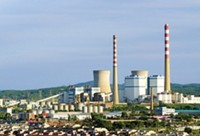Advertisement
Grab your lab coat. Let's get started
Welcome!
Welcome!
Create an account below to get 6 C&EN articles per month, receive newsletters and more - all free.
It seems this is your first time logging in online. Please enter the following information to continue.
As an ACS member you automatically get access to this site. All we need is few more details to create your reading experience.
Not you? Sign in with a different account.
Not you? Sign in with a different account.
ERROR 1
ERROR 1
ERROR 2
ERROR 2
ERROR 2
ERROR 2
ERROR 2
Password and Confirm password must match.
If you have an ACS member number, please enter it here so we can link this account to your membership. (optional)
ERROR 2
ACS values your privacy. By submitting your information, you are gaining access to C&EN and subscribing to our weekly newsletter. We use the information you provide to make your reading experience better, and we will never sell your data to third party members.
Policy
Pollution Data Uneven Across China
Activists find both progress and backsliding in disclosure of environmental data
by Jean-François Tremblay
March 5, 2012
| A version of this story appeared in
Volume 90, Issue 10

Regulations on environmental disclosure adopted by China three years ago have improved the behavior of polluting companies, claims a Beijing-based environmental group. But the new rules are unevenly followed across China, with municipal governments in the eastern part of the country more willing to disclose environmental data than are authorities in the west.
In May 2008, the central government in Beijing adopted two regulations that improve public access to official environmental data. One law was implemented by the State Council, China’s top decision-making body. The other was adopted by the country’s Ministry of Environmental Protection. Among other obligations, cities now have to let citizens see what complaints were filed against companies and what follow-up actions, if any, authorities have taken.
Together, the new rules were a “watershed” for transparency on environmental affairs in China, says Jun Ma, director and founder of the Institute of Public & Environmental Affairs (IPE), a Beijing-based nongovernmental organization. But cities vary in how much access to data they actually provide.
In 2009, Ma’s group developed a pollution information transparency index, or PITI, to monitor the impact of the new rules. They used their methodology to grade 113 Chinese cities on their environmental information disclosure. Earlier this year, working in collaboration with the U.S.-based environmental group Natural Resources Defense Council, IPE published a status report that shows the progress achieved in the past three years.
The PITI rankings are calculated on the basis of eight metrics that measure qualities such as availability of data on corporate environmental violations and access to citizens’ complaints.
The report supplies a mix of good and bad news. A few cities on the coast are making great strides in providing more environmental data to the public, while some cities to the west are actually releasing less data to the public than they did three years ago. On the whole, the report finds, China is still doing a poor job of providing access to environmental information.
Ningbo, in the affluent eastern province of Zhejiang, ranks first in environmental disclosure among the 113 cities reviewed, with a PITI score of 84.0 out of 100. In second place is Shenzhen, an industrial city near Hong Kong. At the bottom of the list are poorer inland cities such as Hohhot and Chifeng. The latter scored a mere 13.2.
Cities in China’s more economically developed east tend to be more open about their environmental data than those in the west, even when their economies, like that of Ningbo, rely heavily on industry. “There is a link between economic development and the level of disclosure,” Ma says. In coming years, he anticipates the gap in environmental information disclosure between eastern and western China will widen even more because western cities seem to be progressing little in making more data available to the public.
Mandated disclosure of environmental data is helping reduce pollution by companies in the cities IPE monitored, according to the report. In 2011, it found, “218 companies provided explanations regarding their pollution issues and the corrective measures that had been taken.” Environmental information disclosure has “already started to push companies to re-think their environmental responsibilities.”
But not enough information is available across China. The average score of the 113 cities reviewed was 40.1 in 2011, a sign that environmental disclosure on the whole remains poor, the report notes. It is likely that many cities do not want to disclose how polluted they have become.
For instance, the city of Zibo in central eastern Shandong province releases less information than it did in 2008. But Zibo is one of China’s largest emitters of sulfur dioxide and nitrogen oxide. There is a clear correlation between the city’s high pollution rate and its poor record of disclosure, the report claims.
Lack of access to environmental data has policy consequences, according to a report on China’s environmental performance released in December 2011 by the Yale Center for Environmental Law & Policy, which collaborated with research centers in Hong Kong, China, and the U.S. Given the limited data, the study authors conclude, it is not possible for researchers to assess China’s environmental performance or for Chinese decisionmakers to design effective policies that will improve environmental conditions.
According to the Ministry of Environmental Protection, China has budgeted $540 billion in the five years from 2011 to 2015 to improve its environmental performance, notably by reducing emissions of major pollutants by 30 to 40%. But without better access to data, researchers and the Chinese public will have to take the government at its word later this decade when it announces the results of the program.



Join the conversation
Contact the reporter
Submit a Letter to the Editor for publication
Engage with us on Twitter